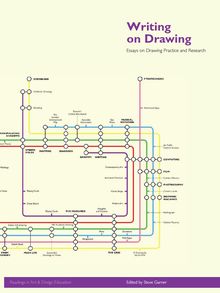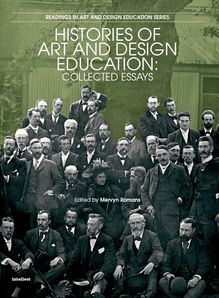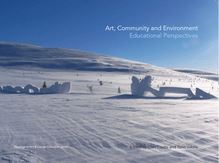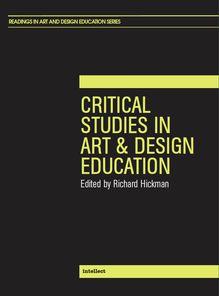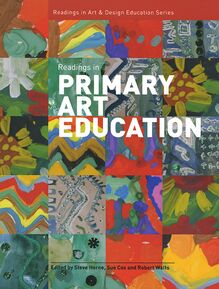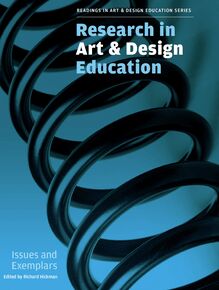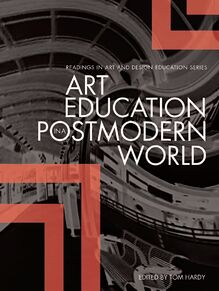-
 Univers
Univers
-
 Ebooks
Ebooks
-
 Livres audio
Livres audio
-
 Presse
Presse
-
 Podcasts
Podcasts
-
 BD
BD
-
 Documents
Documents
-
- Cours
- Révisions
- Ressources pédagogiques
- Sciences de l’éducation
- Manuels scolaires
- Langues
- Travaux de classe
- Annales de BEP
- Etudes supérieures
- Maternelle et primaire
- Fiches de lecture
- Orientation scolaire
- Méthodologie
- Corrigés de devoir
- Annales d’examens et concours
- Annales du bac
- Annales du brevet
- Rapports de stage
La lecture à portée de main
Vous pourrez modifier la taille du texte de cet ouvrage
Découvre YouScribe en t'inscrivant gratuitement
Je m'inscrisDécouvre YouScribe en t'inscrivant gratuitement
Je m'inscrisEn savoir plus
Vous pourrez modifier la taille du texte de cet ouvrage
En savoir plus

Description
With approximately 16,000 students beginning primary teacher education in the UK each year, and each of those being expected to teach art and design, this pioneering volume provides a renewed emphasis on ideas, issues and research in art and design education in the primary and early years phases. It gathers together work from internationally recognised authors, providing a critical framework to underpin current and developing practice in primary art and design education in the UK and worldwide.Through in-depth exploration of debates that have taken place worldwide amongst art educators, it provides a critical framework to underpin current and developing practice. Herne’s edited collection is a welcome addition to art and design education and will be of interest to all those involved in primary art and design education, whether teachers, trainees, post-graduate students or academics.
Sujets
Informations
| Publié par | Intellect Books |
| Date de parution | 14 mai 2014 |
| Nombre de lectures | 0 |
| EAN13 | 9781841503394 |
| Langue | English |
| Poids de l'ouvrage | 1 Mo |
Informations légales : prix de location à la page 0,1600€. Cette information est donnée uniquement à titre indicatif conformément à la législation en vigueur.
Extrait
Readings in Primary Art Education
To Carla
Readings in Primary Art Education
Edited by Steve Herne, Sue Cox and Robert Watts
First published in the UK in 2009 by Intellect Books, The Mill, Parnall Road, Fishponds, Bristol, BS16 3JG, UK
First published in the USA in 2009 by Intellect Books, The University of Chicago Press, 1427 E. 60th Street, Chicago, IL 60637, USA
Copyright 2009 NSEAD
All rights reserved. No part of this publication may be reproduced, stored in a retrieval system, or transmitted, in any form or by any means, electronic, mechanical, photocopying, recording, or otherwise, without written permission.
Series: Readings in Art and Design Education Series editor: John Steers
A catalogue record for this book is available from the British Library.
Cover designer: Holly Rose Copy-editor: Heather Owen
Typesetting: Mac Style, Beverley, E. Yorkshire
ISBN 978-1-84150-242-7 EISBN 978-1-84150-339-4
Printed and bound by Gutenberg Press, Malta.
C ONTENTS
Acknowledgements
Preface
Introduction: Research in Primary Art Education
Steve Herne, Sue Cox and Robert Watts
Chapter 1 Art in the Primary School: Towards First Principles
Geoffrey Southworth
Chapter 2 Art and the Pre-Adolescent Child - Applying Witkin s Theory of Subject-Reflexive Action
Frank Dobson and David Jackson
Chapter 3 Marion Richardson
Bruce Holdsworth
Chapter 4 An Analysis of the Presentation of Art in the British Primary School Curriculum and its Implications for Teaching
Jenny Hallam, Helen Lee and Mani Das Gupta
Chapter 5 In Search of a Curriculum Model for the Primary Schools
Gillian Figg
Chapter 6 Compatibility; Incompatibility? Froebelian Principles and the Art Curriculum
Margaret Payne
Chapter 7 Breadth and Balance? The Impact of the National Literacy and Numeracy Strategies on Art in the Primary School
Steve Herne
Chapter 8 Changing Views of Childhood and their Effects on Continuity in the Teaching of Drawing
Sheila Paine
Chapter 9 How Children Use Drawing
Dennis Atkinson
Chapter 10 Teaching Children to Draw in The Infants School
Maureen Cox, Grant Cooke and Deirdre Griffin
Chapter 11 Conversations around Young Children s Drawing: The Impact of the Beliefs of Significant Others at Home and School
Angela Anning
Chapter 12 Intention and Meaning in Young Children s Drawing
Sue Cox
Chapter 13 Originalities and Originals, Copies and Reproductions: Reflections on a Primary School Project
Anthony Dyson
Chapter 14 Art Learning in Developmental Perspective
Norman Freeman
Chapter 15 Teaching Now with the Living: A Dialogue with Teachers Investigating Contemporary Art Practices
Tara Page, Steve Herne, Paul Dash, Helen Charman, Dennis Atkinson and Jeff Adams
Chapter 16 5 x 5 x 5 = Creativity in the Early Years
Mary Fawcett and Penny Hay
Chapter 17 Tuition or Intuition? Making Sketchbooks with a Group of Ten-Year-Old Children
Gillian Robinson
Chapter 18 An Art Enrichment Project for Eight to Ten-Year-Olds in the Ordinary Classroom
Angela Martin
Chapter 19 Electronic Paint: Understanding Children s Representation through their Interactions with Digital Paint
John Matthews and Peter Seow
Chapter 20 Attitudes to Making Art in the Primary School
Robert Watts
Chapter 21 Room 13: One Artist, 11 years, One School
Anna Harding
Notes on Contributors
Index
A CKNOWLEDGEMENTS
The editors are very grateful to Black Dog Publishing, Anna Harding and Room 13 for permission to republish the essay: Room 13: One artist, 11 years, one school , from the book (2005): Magic Moments, Collaboration between Artists and Young People , London: Black Dog Publishing, edited by Anna Harding as the final chapter.
The editors are also very grateful to Hannah Hutchings, Art Coordinator, Thomas Buxton Infant School, Tower Hamlets, London E1. for permission to use artwork made by children at the school in the cover design.
P REFACE
This book is the eighth in a planned series of anthologies dealing with a range of issues in art and design education. Titles published to date are:
Critical Studies in Art Design Education (2005)
Histories of Art and Design Education (2005)
Art Education in a Postmodern World (2006)
The Problem of Assessment in Art Design (2007)
Research in Art Design Education (2008)
Writing on Drawing: Essays on Drawing Practice and Research (2008)
Art, Community and Environment: Educational Perspectives (2008)
The principal, but not exclusive source of chapters is papers previously published in the International Journal of Art Design Education and, where appropriate, these have been updated. It should be noted that any reference to the English National Curriculum statutory Orders, the Scottish National Guidelines, etc., are to the versions of curriculum content current at the time of original publication.
The National Society for Education in Art and Design is the leading national authority in the United Kingdom, combining professional association and trade union functions, which represent every facet of art, craft and design in education. Its authority is based partly on a century-long concern for the subject, established contacts within government and local authority departments, and a breadth of membership drawn from every sector of education from the primary school to university.
More information is available at www.nsead.org or from NSEAD, The Gatehouse, Corsham Court, Corsham, Wiltshire, SN13 OBZ (Tel: +44 (0) 1249 714825).
I NTRODUCTION : R ESEARCH IN P RIMARY A RT E DUCATION
Steve Herne, Sue Cox and Robert Watts
This book brings together a selection of the most significant and informative papers on primary art education from over 25 years of the International Journal of Art and Design Education. As a collection it captures key moments in the development and practice of the subject and will inform readers who wish to reflect on and evaluate art and design education for children aged 3-11. The authors explore paradigms and metaphors that have conceptualized primary art education as well as theorizing practice. They record the achievements of the field and point towards the challenges currently faced by teachers of art and design, in the primary and early years phases (ages 3-11), in the twenty-first century.
The selection includes material written from a contemporary perspective as well as from earlier years of the journal and includes one chapter from an outside source. Reflecting the character of the journal itself, the authors discuss important movements and influential thinkers and debates, and the collection includes the work of both practitioners and researchers. Postscripts are added to some of the chapters which identify further readings and, in some cases, contain new commentaries from the original authors or further research findings.
In this introduction the editors present a brief overview of developments in the field of primary art and design education, considering six broad themes that are reflected in the chapters in the collection: research investigations; histories and overviews; curriculum change; drawing; critical studies and children s voices. We hope that this adds value to the collection by providing insights into the contexts and development of primary art and design education, as well as introducing the reader to the content of each chapter.
We believe that the collection will be of relevance to reflective practitioners who wish to develop their art and design teaching or subject leadership. Students embarking on teacher education courses will find this a valuable and readable resource which will support the development of their pedagogical thinking and evaluation of classroom practice. Beginning, developing and experienced researchers in the field will find this collection and its new material essential reading and an ongoing source of reference.
Research investigations
The intended readership of this collection includes teachers in primary schools with a particular interest in art and design. Few would consider themselves specialist teachers of art and design and most are required to teach across the whole of the primary curriculum. Yet many teachers are involved in some kind of research into their practice as a teacher of art and design, which entails reflection on the outcomes in their classrooms as well as challenges to their preconceptions and assumptions.
The decisions that teachers make, whether based upon established strategies for teaching and learning, for observing pupils, or for behavioural management, are arguably often informed by research, however informal, into their own or colleagues practice. And while the concept of research may sometimes seem remote from the pressing and practical problems faced by teachers on a daily basis, informal research essentially underpins the practice of teaching and forms the foundation for change and evolution across the education system. The vast majority of this research may go unrecorded and unnoticed by all but the handful of people directly affected by it. Experiences that could potentially be shared and discussed with colleagues pass quickly in the classroom and opportunities to pause and reflect may be rare. Rarer still may be those occasions on which teachers are able locate these experiences within the broader context of educational research and debate.
Engaging with research offers teachers opportunities to link theory and practice in art education. As Gillian Figg observes in Chapter 5 of this collection, To be a practising teacher who is simultaneously involved in research is a chastening and enlightening experience and injects a strong sense of realism into curriculum theory. Whether carried out recently or decades ago, whether located in a similar context to the teacher s own experience or in a contrasting environment, research can enable teachers to make connections between their own practice and that of other educators, to raise questions about
-
 Univers
Univers
-
 Ebooks
Ebooks
-
 Livres audio
Livres audio
-
 Presse
Presse
-
 Podcasts
Podcasts
-
 BD
BD
-
 Documents
Documents
-
Jeunesse
-
Littérature
-
Ressources professionnelles
-
Santé et bien-être
-
Savoirs
-
Education
-
Loisirs et hobbies
-
Art, musique et cinéma
-
Actualité et débat de société
-
Jeunesse
-
Littérature
-
Ressources professionnelles
-
Santé et bien-être
-
Savoirs
-
Education
-
Loisirs et hobbies
-
Art, musique et cinéma
-
Actualité et débat de société
-
Actualités
-
Lifestyle
-
Presse jeunesse
-
Presse professionnelle
-
Pratique
-
Presse sportive
-
Presse internationale
-
Culture & Médias
-
Action et Aventures
-
Science-fiction et Fantasy
-
Société
-
Jeunesse
-
Littérature
-
Ressources professionnelles
-
Santé et bien-être
-
Savoirs
-
Education
-
Loisirs et hobbies
-
Art, musique et cinéma
-
Actualité et débat de société
- Cours
- Révisions
- Ressources pédagogiques
- Sciences de l’éducation
- Manuels scolaires
- Langues
- Travaux de classe
- Annales de BEP
- Etudes supérieures
- Maternelle et primaire
- Fiches de lecture
- Orientation scolaire
- Méthodologie
- Corrigés de devoir
- Annales d’examens et concours
- Annales du bac
- Annales du brevet
- Rapports de stage

